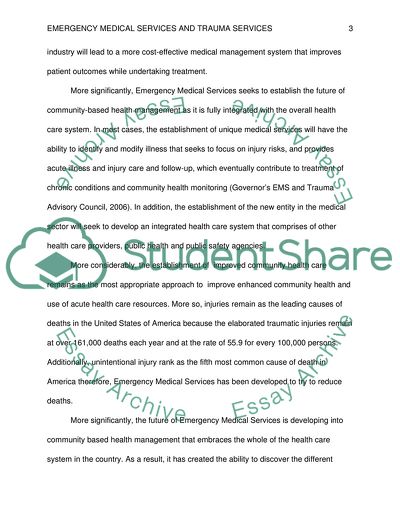Cite this document
(Emergency Medical Services and Trauma Services Research Paper, n.d.)
Emergency Medical Services and Trauma Services Research Paper. Retrieved from https://studentshare.org/health-sciences-medicine/1789560-the-benefits-of-recognizing-emergency-medical-services-ems-and-trauma-services-as-essential-services-in-local-governments
Emergency Medical Services and Trauma Services Research Paper. Retrieved from https://studentshare.org/health-sciences-medicine/1789560-the-benefits-of-recognizing-emergency-medical-services-ems-and-trauma-services-as-essential-services-in-local-governments
(Emergency Medical Services and Trauma Services Research Paper)
Emergency Medical Services and Trauma Services Research Paper. https://studentshare.org/health-sciences-medicine/1789560-the-benefits-of-recognizing-emergency-medical-services-ems-and-trauma-services-as-essential-services-in-local-governments.
Emergency Medical Services and Trauma Services Research Paper. https://studentshare.org/health-sciences-medicine/1789560-the-benefits-of-recognizing-emergency-medical-services-ems-and-trauma-services-as-essential-services-in-local-governments.
“Emergency Medical Services and Trauma Services Research Paper”, n.d. https://studentshare.org/health-sciences-medicine/1789560-the-benefits-of-recognizing-emergency-medical-services-ems-and-trauma-services-as-essential-services-in-local-governments.


